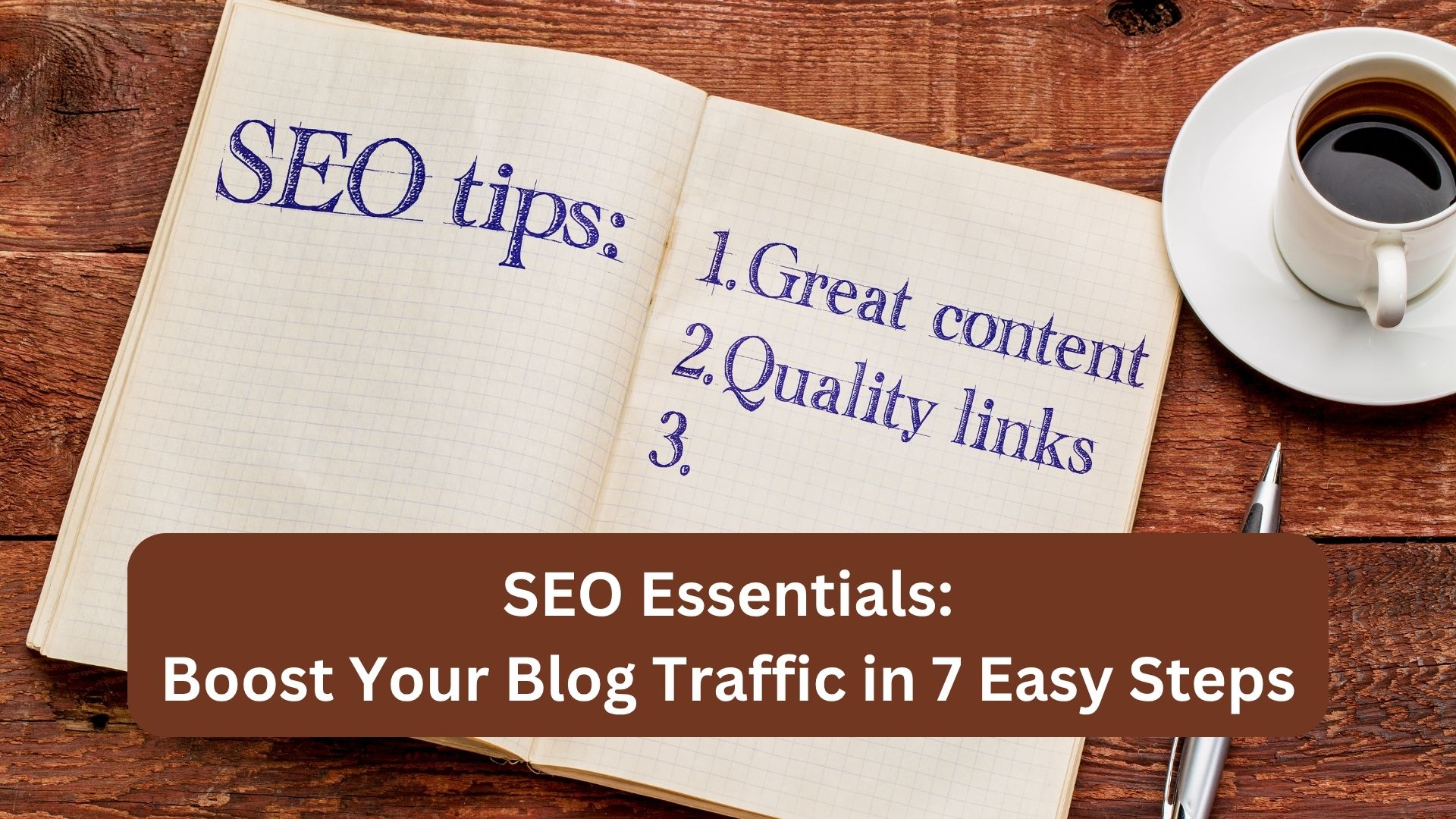If you’re writing valuable content but struggling to get eyes on it, this blog is your roadmap to more visibility. Whether you’re a freelancer, a virtual assistant, or a business owner running your own blog, learning SEO (Search Engine Optimization) doesn’t have to be complicated. In this guide, we’ll walk through seven simple but powerful SEO strategies you can apply today to boost your blog traffic.
Step 1: Do Smart Keyword Research
Keywords are the foundation of SEO. They tell search engines what your content is about.
Free Keyword Tools to Use:
| Tool | Features |
|---|---|
| Google Keyword Planner | Keyword volume, competition levels |
| Ubersuggest | Keyword suggestions + SEO difficulty |
| AnswerThePublic | Question-based keywords |
| ChatGPT | Idea generation and niche keyword brainstorming |
Tips:
- Choose long-tail keywords (e.g., “how to start freelancing from home” instead of “freelancing”) for better targeting.
- Use keywords that match search intent—informational, commercial, or transactional.
- Aim for keywords with moderate search volume and low competition if your site is new.
Step 2: Write Compelling Titles & Meta Descriptions
Your blog title and meta description are what users see first on Google.
Example Before vs. After:
| Element | Weak | Strong |
| Title | SEO for beginners | 7 SEO Tips for Beginners to Get More Blog Traffic in 2025 |
| Meta Description | Learn SEO basics | Learn how to drive blog traffic with 7 simple SEO strategies even non-techies can use. |
Tips:
- Include your main keyword in both title and meta description.
- Keep titles under 60 characters and meta descriptions under 160 characters.
- Add urgency, numbers, or questions to improve click-through rates.
Step 3: Use Header Tags to Structure Your Blog
Headers help both readers and search engines navigate your content.
Header Format Guide:
| Heading | Purpose |
| H1 | Blog title (only one per page) |
| H2 | Main sections of the blog |
| H3 | Subsections or details within H2 topics |
Example:
H1: SEO Essentials: Boost Your Blog Traffic
H2: Do Smart Keyword Research
H3: Tools You Can UseUse keywords naturally in headers without stuffing.
Step 4: Optimize Your Content for Readability
A blog that’s easy to read gets more engagement, longer dwell time, and lower bounce rates.
Quick Content Tips:
- Use short paragraphs (2–4 lines)
- Write in a conversational tone
- Break up text with bullet points, tables, and visuals
- Add internal links to related posts
Helpful Formatting Tools:
- Grammarly (grammar & tone)
- Hemingway Editor (readability)
- Canva (visual content creation)
Step 5: Add Alt Text to All Images
Alt text isn’t just for accessibility—it helps search engines understand what your images are.
Alt Text Example:
- Bad: “Screenshot”
- Good: “Screenshot of Ubersuggest keyword tool for blog SEO keyword research”
Make your image file names descriptive too (e.g., “seo-keyword-tool-2025.jpg”).
Step 6: Improve Page Speed and Mobile Experience
Search engines prioritize fast, mobile-friendly websites.
Tools to Check Speed:
| Tool | Function |
| Google PageSpeed Insights | Performance scores + improvement tips |
| GTmetrix | Detailed page load analysis |
| Mobile-Friendly Test | Check responsiveness on mobile |
Quick Fixes:
- Compress images before uploading (use TinyPNG or ImageOptim)
- Use lightweight themes and plugins
- Enable caching and consider a CDN (Content Delivery Network)
Step 7: Promote Your Blog Post Strategically
Publishing isn’t enough—you need to amplify your blog.
Promotion Checklist:
- Share on Facebook, LinkedIn, Instagram, Pinterest
- Repurpose into short videos, carousels, or quote graphics
- Submit to Medium, Quora, or relevant subreddits
- Email your list or contacts with a personal message
Pro Tip: Use SEO-friendly social captions with hashtags and a strong call-to-action (e.g., “Read the blog for full details ➡️ link in bio!”)
Final Thoughts
SEO is not a one-time task—it’s a habit. Implementing just a few of these seven steps can drastically increase your blog traffic over time. Start with keyword research, improve your titles and meta descriptions, and make your blog easy to read and share. Combine good SEO practices with high-value content, and your blog will gain the visibility it deserves.
Keep learning, testing, and optimizing. Your future traffic is already searching for you—make it easy for them to find your work.







Leave a Reply